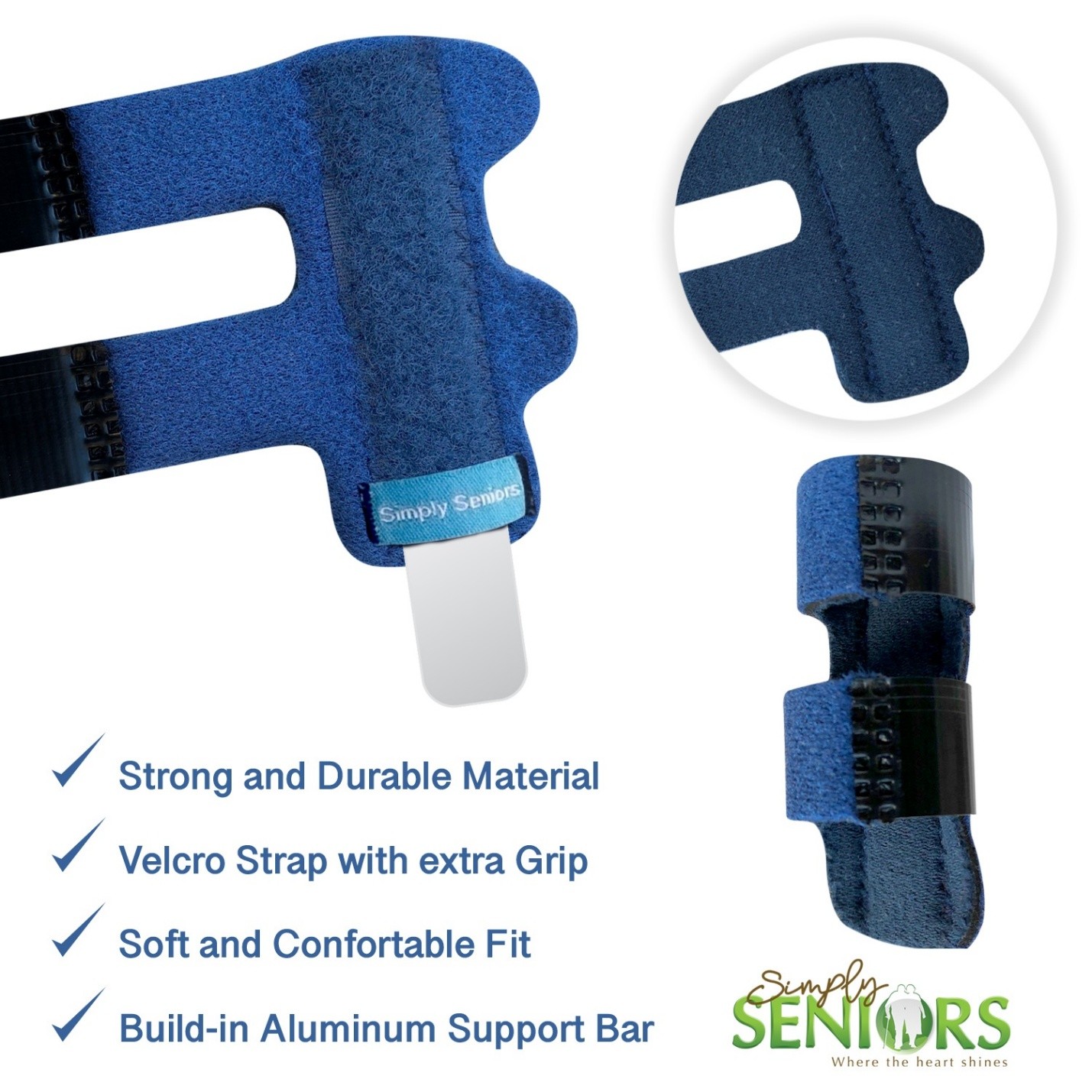Finger injuries can disrupt even the simplest daily activities, particularly for seniors who rely on their hands for tasks like cooking, writing, or gardening. Whether it’s due to arthritis, a sports injury, or an accidental sprain, middle finger discomfort requires prompt care to prevent long-term complications. One of the most effective tools for managing such conditions is a finger splint for the middle finger. This versatile support device helps stabilize the finger, alleviate pain, and promote healing, all while maintaining mobility in the other fingers.
Why are Middle Finger Injuries Common?
The middle finger plays a critical role in hand function. It’s involved in gripping, pinching, and balancing other fingers during motion. Unfortunately, this means it’s also prone to:
- Overuse Injuries
Repetitive motions, such as typing or gardening, can strain the tendons and ligaments.
- Joint Wear and Tear
Osteoarthritis often affects the middle finger due to the constant load it bears.
- Accidental Trauma
Falls or direct impacts can lead to sprains, dislocations, or fractures.
For seniors, reduced bone density and slower healing processes make recovery from these injuries even more challenging.
Features and Functions of a Finger Splint
A finger splint is not just a simple support device—it’s a game-changer for hand health. Here’s how it works:
| Feature | Function |
| Rigid Frame | Prevents excessive movement to protect the injured area. |
| Soft Padding | Ensures comfort and prevents pressure sores. |
| Adjustable Straps | Provides a snug yet flexible fit for various finger sizes. |
| Breathable Material | Keeps the skin cool and reduces irritation during extended use. |
How a Finger Splint Improves Daily Life?
- Reduces Pain
Immobilizing the middle finger helps reduce inflammation and relieves pain.
- Prevents Worsening of Injuries
A splint keeps the finger in the correct position, protecting it from further strain.
- Supports Rehabilitation
Finger splints promote proper alignment and joint healing, which is especially beneficial for seniors recovering from surgery or arthritis flare-ups.
- Restores Confidence in Movement
With the affected finger stabilized, users can perform everyday tasks with less fear of aggravating the injury.
Types of Finger Splints to Consider
Choosing the right splint depends on the condition you’re managing. Common options include:
- Static Splints
Designed for immobilization, ideal for fractures or severe sprains.
- Dynamic Splints
Allow controlled movement, helpful for arthritis or tendon injuries.
- Stack Splints
Specifically for fingertip injuries and alignment issues.
Consult with a healthcare provider to determine which type is best for your needs.
Practical Tips for Using a Finger Splint
- Wear It Consistently
Adhere to the wearing schedule recommended by your doctor or therapist.
- Combine with Care
Use anti-inflammatory treatments or hand exercises, as advised, alongside the splint.
- Inspect Regularly
Check for signs of wear and tear to ensure the splint remains effective.
- Replace if Necessary
Switch to a new splint if the current one no longer provides adequate support or comfort.
Take the First Step Toward Healing
A finger splint for the middle finger is a simple yet powerful tool for seniors dealing with injuries or chronic conditions. By providing stability, reducing pain, and supporting recovery, it empowers you to regain control of your hand’s functionality.
For seniors managing arthritis, check out our recommendations on the best finger brace for arthritis to further enhance your joint health.
Explore our collection of finger splints and braces, specially designed to provide the relief and support you deserve. Visit Simply Seniors Co. today!


